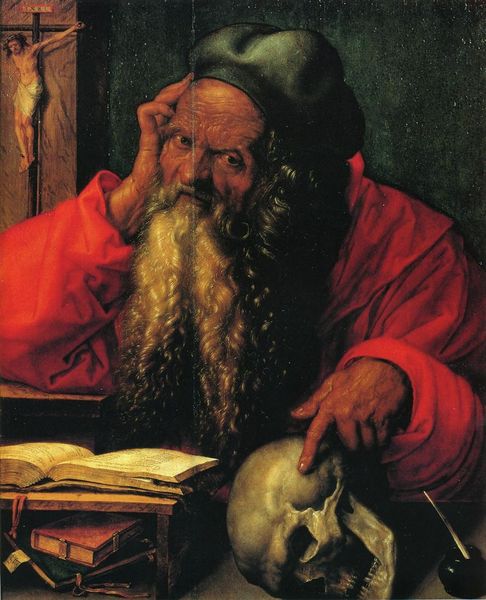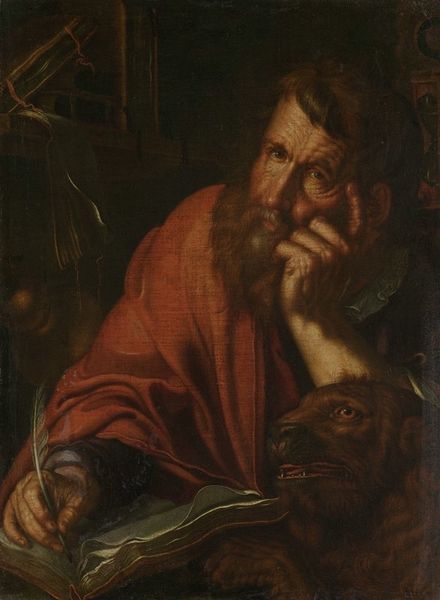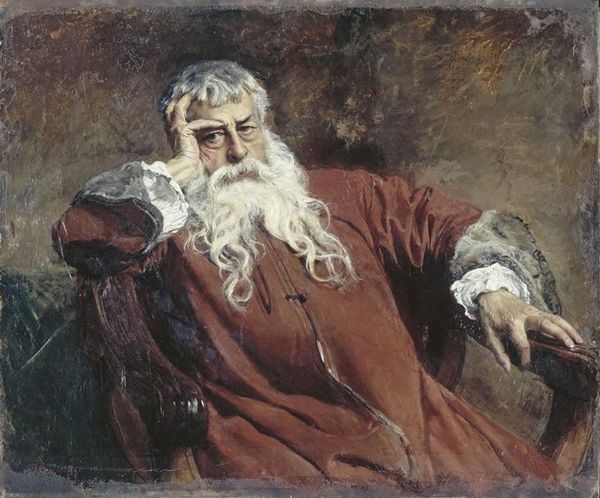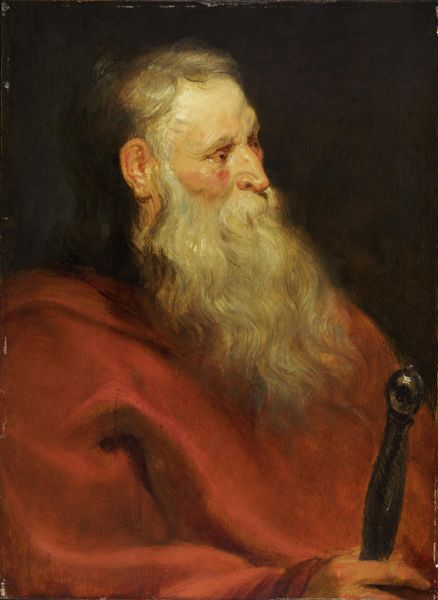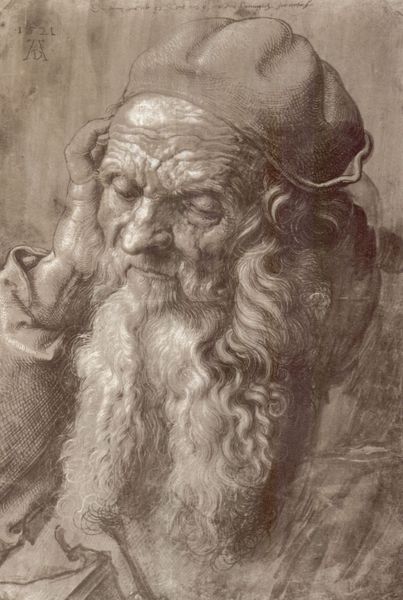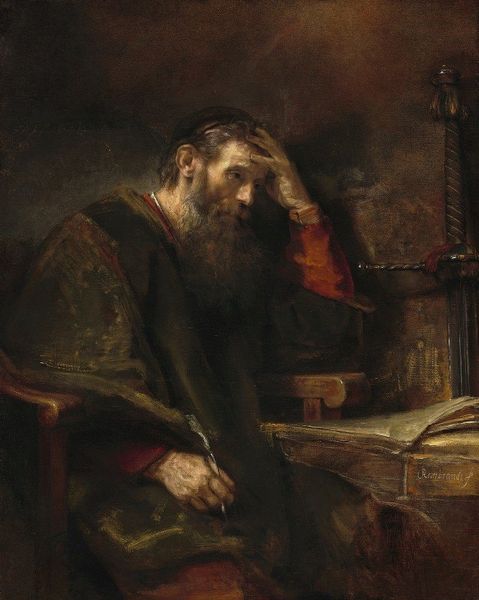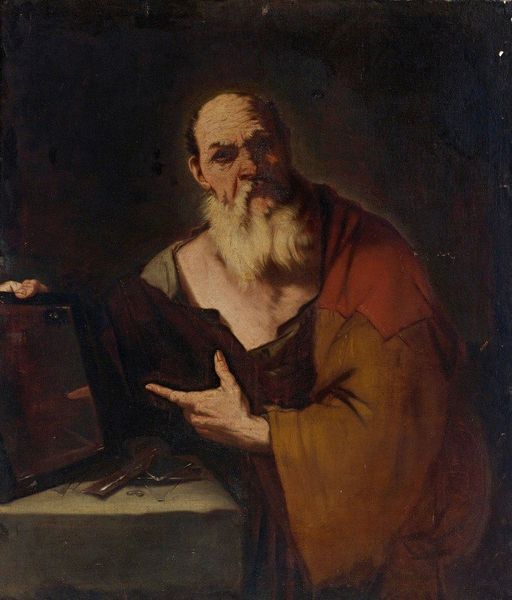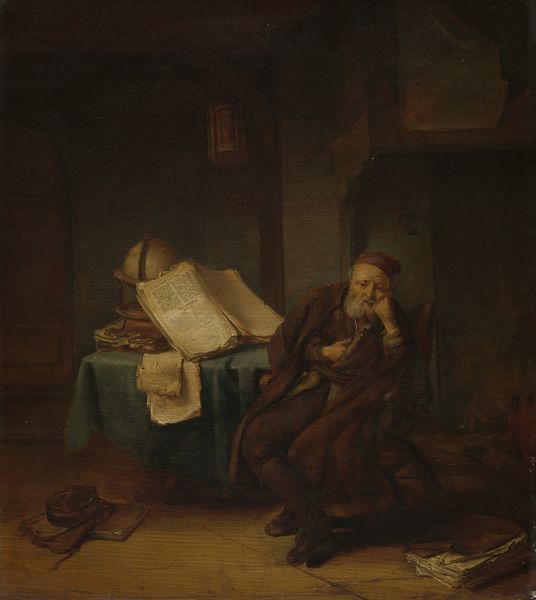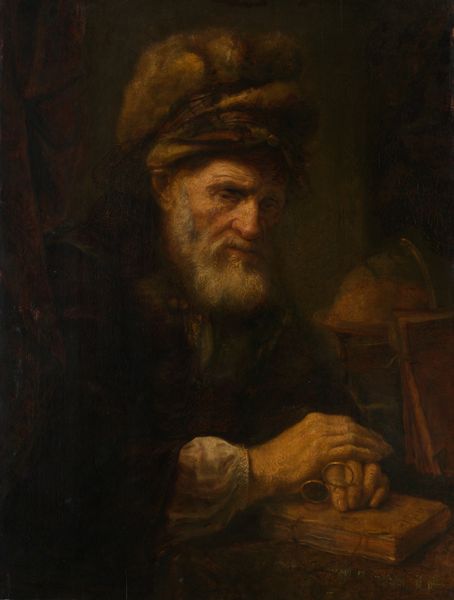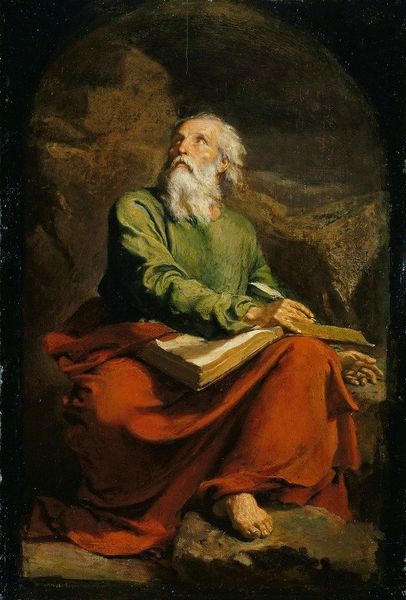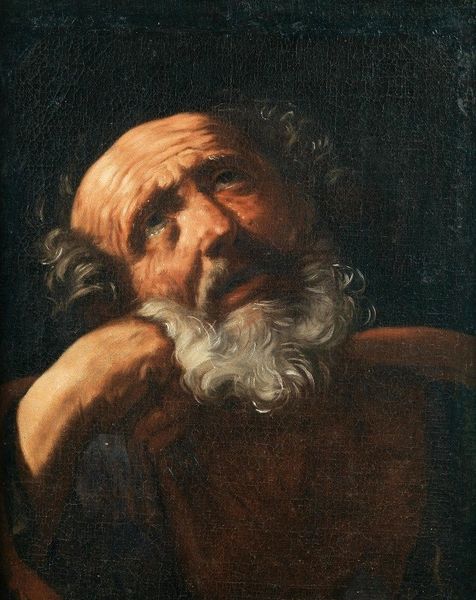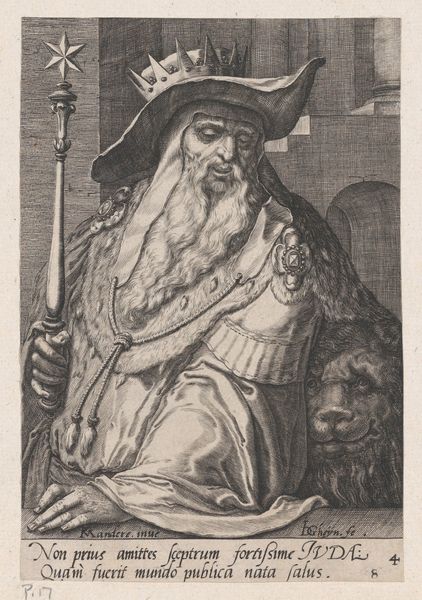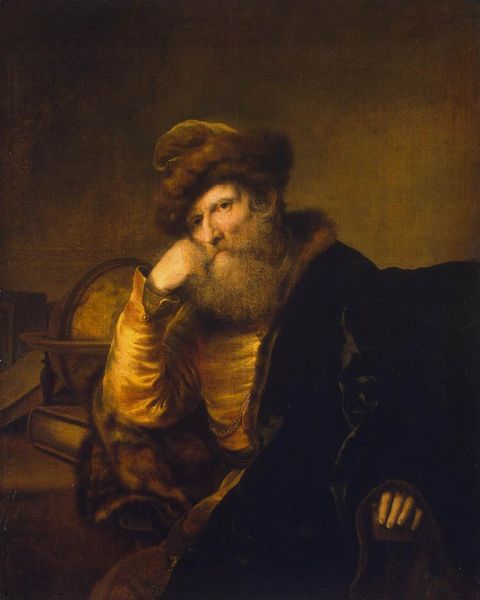
Copyright: Public Domain: Artvee
Curator: Ah, here we have Friedrich von Amerling’s "Gelehrter In Seiner Studierstube," painted in 1876, an oil on canvas portraying a scholar in his study. Editor: My initial impression is one of intense introspection, a figure caught in a moment of profound thought, perhaps burdened by knowledge or revelation. The somber tones add to that gravity. Curator: Note the scholarly props surrounding him. The open books suggest dedication to knowledge. The globe hints at an understanding of the world beyond the study's confines. Editor: Yes, but there's also a distinct absence of other figures, emphasizing his isolation. We might interpret the books as representing accumulated power, knowledge held tightly within a single person, and perhaps a failure to disseminate that knowledge broadly, for social uplift. Curator: I understand your reading, but one could also see the portrait as honoring individual intellect. Notice the turban-like headwear; it may hint at the romantic era’s preoccupation with "the Orient", or other exotic sources of ancient knowledge. The color red seems to amplify this focus and wisdom. Editor: That "romantic" lens, however, could blind us to a deeper analysis of why that "exoticism" was valorized in the first place. Where is the place for a social critique of cultural representation? Who held the pen and painted this story of intellectual authority, and whose voices were excluded from that very narrative? Curator: Certainly, power structures shape all forms of representation. Perhaps we can then analyze how Romanticism was used to shape conceptions of intellectual authority through exoticist themes, through art historical, social and psychological frameworks. It presents to me how cultures change over time. Editor: Exactly! Art isn't just aesthetics. This painting challenges us to deconstruct ideas of knowledge production itself, questioning not only what is known but also how it becomes validated. A lone figure immersed in learning while systemic inequalities persist? We have to consider such ironies and social critique in our contemporary reading. Curator: Thank you, your insightful perspective helps enrich how we see art and history intertwined. Editor: My pleasure; may our conversation catalyze further explorations beyond a purely formal reading.
Comments
No comments
Be the first to comment and join the conversation on the ultimate creative platform.
